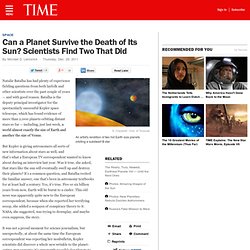

How To Imagine The Tenth Dimension&Video. Danteworlds - StumbleUpon. Brugmansia arborea. Flor péndula.

Hojas de limbos asimétricos. Descripción[editar] Es un arbusto perenne alcanza hasta 5 m de altura, caducifolio, hojas alternas, ovales, con limbos asimétricos en la base; presenta el envés piloso, verde mate; florece de verano a otoño, flores aromáticas, de 3 dm, blancas y que pueden ser de pétalos dobles; son las flores de mayor tamaño entre arbustos de jardín; Cultivo y usos[editar] Se utiliza como planta ornamental. Usos rituales[editar] El consumo ritual de Brugmansia es un importante aspecto del chamanismo en algunos pueblos indígenas del este del Amazonas como los Jíbaros.
Efectos [cita requerida] AlucinacionesVisión de colores y figuras que no son reales o concretas SinestesiaAlucinaciones persecutoriasDistorsión de imágenesSueñoRecuperación de algunos recuerdos perdidosErecciones prolongadas Causa cambios en la personalidad y el estado de ánimo. Scientific Tuesdays - How to make Magnetic Fluid (ferro fluid) How to make a fire tornado. Yale Discovers a Fungus That Eats Plastic. Plastic is possibly the greatest commercial creation of last 150 years.

It's made it into tupperware, saran wrap, toys, car parts, computer parts, smartphones, and shopping bag all over the world. - StumbleUpon. Scientists Discover The Oldest, Largest Body Of Water In Existence. Scientists have found the biggest and oldest reservoir of water ever--so large and so old, it’s almost impossible to describe.

The water is out in space, a place we used to think of as desolate and desert dry, but it's turning out to be pretty lush. Researchers found a lake of water so large that it could provide each person on Earth an entire planet’s worth of water--20,000 times over. Yes, so much water out there in space that it could supply each one of us all the water on Earth--Niagara Falls, the Pacific Ocean, the polar ice caps, the puddle in the bottom of the canoe you forgot to flip over--20,000 times over.
The water is in a cloud around a huge black hole that is in the process of sucking in matter and spraying out energy (such an active black hole is called a quasar), and the waves of energy the black hole releases make water by literally knocking hydrogen and oxygen atoms together. Chronology of Events in Science, Mathematics, and Technology - StumbleUpon. - StumbleUpon. The Science Creative Quarterly & A DIALOGUE WITH SARAH, AGED 3: IN WHICH IT IS SHOWN THAT IF YOUR DAD IS A CHEMISTRY PROFESSOR, ASKING “WHY” CAN BE DANGEROUS - StumbleUpon.
SARAH: Daddy, were you in the shower?

DAD: Yes, I was in the shower. - StumbleUpon. Scirus - for scientific information - StumbleUpon. Researchers now able to stop, restart light. By William J.

Cromie Gazette Staff "Two years ago we slowed it down to 38 miles an hour; now we've been able to park it then bring it back up to full speed. " Lene Hau isn't talking about a used motorbike, but about light – that ethereal, life-sustaining stuff that normally travels 93 million miles from the sun in about eight minutes. Less than five years ago, the speed of light was considered one of the universe's great constants. Albert Einstein theorized that light cannot travel faster than 186,282 miles per second. Meditation found to increase brain size. Kris Snibbe/Harvard News Office Sara Lazar (center) talks to research assistant Michael Treadway and technologist Shruthi Chakrapami about the results of experiments showing that meditation can increase brain size.

People who meditate grow bigger brains than those who don’t. Researchers at Harvard, Yale, and the Massachusetts Institute of Technology have found the first evidence that meditation can alter the physical structure of our brains. Brain scans they conducted reveal that experienced meditators boasted increased thickness in parts of the brain that deal with attention and processing sensory input. - StumbleUpon. Quantum Pixel. How To&8230; - StumbleUpon. Embed This Infographic <a href= "><img src=" title="10 How Tos" alt="How To Infographic" border="0" class="nopin" /></a><br />Source: <a href=' title='Interesting Facts'><a href=' title='Interesting Facts'>Today I Found Out</a></a> 1) How to drastically increase the life of your shaving razor Before or after you shave (I prefer before so that the blades are dry), place your jeans on a hard flat surface; then run the razor up the pant legs about 10-15 times quickly; then repeat running it down the pant legs 10-15 times quickly.

No need to press that hard, but a little pressure is necessary. necessary. In both instances, you want to point the top of the razor in the direction you are rubbing the shaver on the pants. The threads on the jeans then will very effectively both fix any tiny bends in the blades that inevitably happen and will also sharpen the blades on your shaver cartidge. Bunimovich. 3-Body Gravitational Problem. TwinParadox. Can 1 miracle plant solve the world's 3 greatest problems? If someone were to tell you that they had a technology — a weed actually — that could sequester huge amounts of carbon permanently while lifting villagers out of poverty by providing both protein-rich food and super-insulated building materials, you might start to wonder if they were, well, smoking a different weed.

But it appears that one retired building contractor, Bill Loftus, has actually come upon a brilliant application of the fast-growing, carbon-sucking plant known as Kenaf. Kenaf is in the Hibiscus family and is thus related to both cotton and okra. Dr. Kakus Universe. Dry-roasted planets: A Sun-Like Star That Tried To Eat Its Young. Natalie Batalha has had plenty of experience fielding questions from both layfolk and other scientists over the past couple of years — and with good reason.

Batalha is the deputy principal investigator for the spectacularly successful Kepler space telescope, which has found evidence of more than 2,000 planets orbiting distant stars so far — including, just last week, a world almost exactly the size of Earth and another the size of Venus.